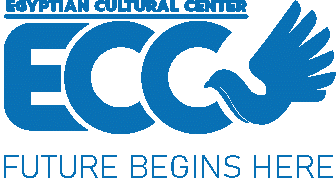Why a feasibility study is very important in project management? To know the answer of this important question, we need at first know what is the feasibility study? the feasibility study or feasibility analysis, is the foundation upon which your project plan is based. That’s because the feasibility analysis determines the feasibility of your project. Now go on to find out what you need to know about feasibility studies.
What Is a Feasibility Study?
A feasibility study is simply an assessment of the practicality of a proposed project plan which is done by analyzing technical, economic, legal, operational and temporal feasibility factors. Just as the name implies, you are asking, “Is this possible and feasible?” As an example, do you have to create a technology to do what you’re suggesting for or can you create it? Do you have the necessary people, tools and resources? Will the project provide you with the return on investment (ROI) that you expect?
When should project managers do the feasibility study? This should be done during this stage in the project management lifecycle after the the business case is completed.
We just discussed the questions started with what and when, but what about the question started with “why”? we mean by it; why do you need a feasibility study? Well, it identifies the factors that affect the feasibility of the project, which makes it very important.
What Is Included in a Feasibility Study Report?
The results of your project feasibility study are compiled into a feasibility report that usually includes the following elements.
- Executive summary
- Description of product/service
- Technology considerations
- Product/service marketplace
- Marketing strategy
- Organization/staffing
- Schedule
- Financial projections
- Findings and recommendations
Types of Feasibility Study
- Technical feasibility: This is the determination of whether your organization has the technical resources and expertise to meet the requirements of the project.
- Economic feasibility: You will need to make an assessment of the economic factors of your project to determine its financial feasibility. You can use cost-benefit analysis to compare its financial costs against the expected benefits.
- Legal Feasibility: Your project must meet legal requirements. This includes regulations and laws that apply to all activities and deliverables within your project scope.
- Operational feasibility: Operational feasibility refers to how well your project aligns with your organization’s capacity planning, resources, strategic objectives, and business objectives.
- Time feasibility: Estimating the time it will take to implement the project and setting deadlines. Then think about how your project’s timeline fits in with your existing processes, such as demand planning and production schedule, among many other things.
7 Steps to Do a Feasibility Study
- Conduct a Preliminary Analysis
Start by outlining your project plan. It should focus on an unserved need, a market in which demand is greater than supply, and whether a product or service has a clear advantage. Then you need to determine if the viability factors are too high to clear (i.e. expensive, unable to effectively market, etc.).
- Prepare a Projected Income Statement
This step requires you to work backwards. Start with what you expect the income from the project to be and then what project funding is required to achieve that goal. This is the basis of the income statement. Things to consider here include the services required, how much they cost, and any revenue adjustments such as reimbursements, etc.
- Conducting a Market Survey, or Market Research
This step is a key to the success of your feasibility study, so make your market analysis as comprehensive as possible. It is very important that if your organization does not have the resources to do a proper task, then it pays to hire an outside company to do it.
Market research will give you the clearest picture of the revenue and ROI that you can realistically expect from the project. Some of the things to consider are geographic impact on the market, demographics, competitor analysis, market value and what your share will be and whether the market is open to expansion (i.e. responding to your offer).
- Plan Business Organization and Operations
Once the basics for the previous steps is laid, it is time to establish the organization and operations of the planned project to meet the factors of technical, operational, economic and legal feasibility. It should be comprehensive and include start-up costs, fixed investments and operating costs.
These costs deal with things like equipment, merchandising methods, real estate, personnel, availability of supply, overheads, etc.
- Prepare an Opening Day Balance Sheet
This includes an estimate of liabilities, which should be as accurate as possible. To do this, create a list that includes the items, sources, costs, and available financing. Liabilities to consider are things like leasing or buying land, buildings and equipment, and financing assets and receivables.
- Review and Analyze All Data
All of these steps are important, but review and analysis are especially important to make sure everything is as it should be and that nothing requires tweaking. So, you should take a moment to look at your work one last time.
Re-examine your previous steps, such as your income statement, and compare them to your expenses and obligations. Is it still realistic? This is also a good time to think about, analyze and manage risks and come up with any contingency plans.
- Make a Go/No-Go Decision
You are now at this point to make a decision on whether or not the project is feasible. This sounds simple, but all of the previous steps lead to this moment of decision making. Two other things to consider before making this binary option are whether the commitment is worth the time, effort and money and is it in line with the organization’s strategic goals and long-term aspirations.
Best Practices for a Feasibility Study
- Use project management software to organize your data and work efficiently and effectively.
- Use templates or any data or technology that gives you leverage.
- Involve the right stakeholders to get their feedback
- Use market research to increase your data collection
- Ask your questions to make sure your data is solid.
If you an Entrepreneurs or seeking for start your own business, and want to know more about the feasibility study, Egyptian Cultural Center offers you MBA program from the best universities in the world, to practice your profession, learn more about businesses and open many opportunities for you.
Contact us now to know more about your MBA from “ECC” and to check the information related to the access requirements, the admission criteria and tests or the documentation you need to request access.
Visit our website through the link below.
Or message us on Facebook page


